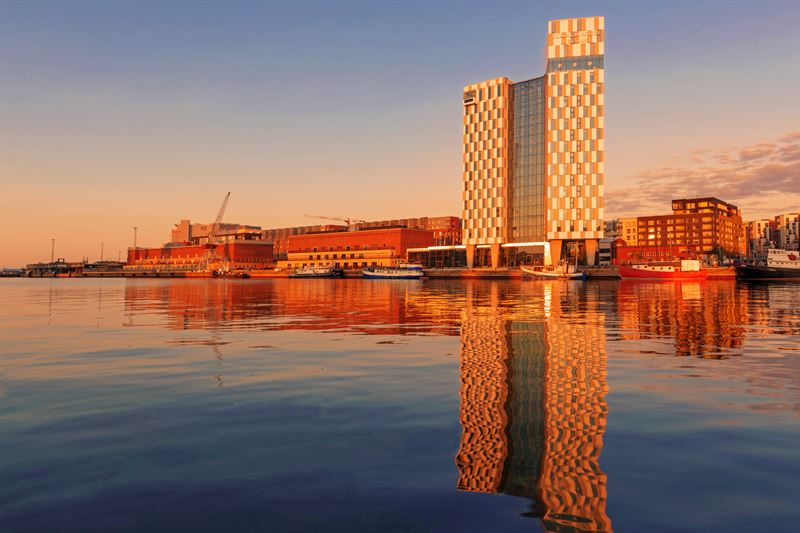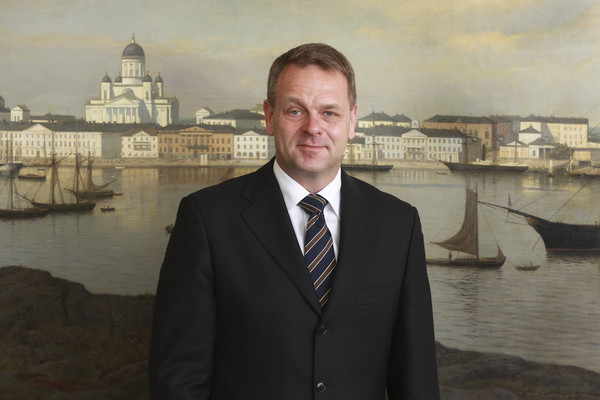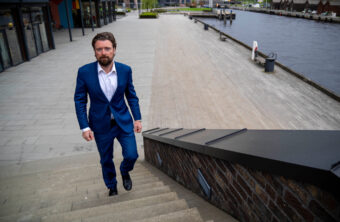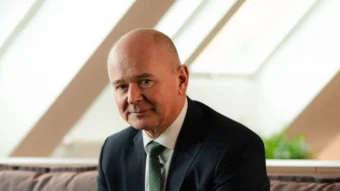
The ten finalist proposals provide potential solutions to decarbonise the heating of Helsinki. Revealed for the first time, the ten innovations were selected amongst 252 proposals from over 35 countries that were submitted in the first stage of the Helsinki Energy Challenge. The 10 Finalists in the challenge were notified on 6 November 2020 receiving €10,000 each to continue elaborating their solution in greater detail in partnership with the City of Helsinki.
The City of Helsinki sees these proposals as the guidelines that will set the path towards implementing future energy solutions for heating the city. With the Helsinki Energy Challenge, the City of Helsinki wanted to find long-term sustainable heating solutions and to act as a testbed for solutions that also other cities around the world can benefit from. The City of Helsinki is committed to sharing the lessons learned and results gained in the competition so that also other cities around the world can use them in their climate work.
The 10 finalist proposals are outlined in the pages below.
- HIVE
- BEYOND fossils
- Smart Salt City
- The Hot Heart
- CarbonHelSinki
- CHP Consumers to Heat Producers
- Flexible Future
- Going Deep
- Sustainable Heat Coalition
- Use it Or Lose It
AWARD WINNER:
HIVE
STORENGY (France): Philippe Aubry
NEWHEAT (France): Julien Metge
ENGIE (France & Belgium): Romain Donat – Sandrine Bosso – Valentin Gavan – Jean-Baptiste Débonnaire – Albin Popot
PlanEnergi (Denmark): Daniel Trier
AEE INTEC (Austria): Ingo Leusbrock
SAVOSOLAR (Finland): Laurène Mejean
HIVE’ solution means no more coal or gas to heat the city, so a better air quality for every inhabitant and much less CO2 emissions for the planet.
How is this possible? Thanks to the Baltic Sea, one of the city’s key assets. With heat pumps, up to 50% of the city’s heat needs can be harvested from the sea. Solar thermal fields, thermal energy storages and district heating grid optimization are also part of the solution. Storages will buffer the heat load over the year, and back up normal production.
Another positive impact of HIVE’ solution is the freeing of space in the city-centre, especially in Salmisaari and Hanasaari neighbourhoods. Last but not least, it is local, cannot be relocated and would require many local workers to be implemented over the next 15 years.
HIVE’s proposal, a “baseline scenario” for Helsinki, is based on proven technologies and solutions. Sea water heat pumps, electrical boilers and solar thermal fields are the key new heat production assets to be implemented. In addition, substantial new heat storage capacity will be built, comprising of pit thermal energy storage and borehole thermal energy storage, to ensure both fast response and strategic level storage are adequate. HIVE’s solution features also steps towards operation of the heating network at lower temperature levels, both on supply and return side, which will make the system more optimal for the heat pumps. Finally, the solution includes demand side management measures.
HIVE’s plan is flexible and capable of integrating new technologies or new heat sources if and when these emerge, and the roadmap (“baseline scenario”) until 2035 can be updated several times.
Media contact:
Yousra Martel
Video of proposal:
www.helsinkikanava.fi/en/web/helsinkikanava/player/vod?assetId=94829294
AWARD WINNER:
BEYOND fossils
VTT Technical Research Centre of Finland: Åsa Hedman, Tomi J. Lindroos
Finnish Environment Institute (SYKE): Hannu Savolainen, Karoliina Auvinen
Hansel: Pasi Tainio
Aleksi Lumijärvi (independent expert)
The “BEYOND fossils” concept proposal is an energy transition management model based on clean heating auctions. It ensures cost-effective investments in clean heating solutions in rapidly developing low-carbon energy markets and paves up the path to carbon neutral Helsinki in a flexible way. Implementation of the model will end the era of coal by 2029 and reduce the overall greenhouse gas life cycle emissions by 80%, while energy security is assured simultaneously.
The goal to replace coal by 2029 requires several parallel measures with a very tight schedule. Energy demand needs to be reduced and new clean production capacity has to be installed. To enable this, the best solutions on the market are needed. Energy technologies and solutions are developing rapidly, and the best options today might not be similar to the best ones in 2029. Regular and frequent clean heating auctions is a flexible approach and will enable that the very best heating sources are implemented on a yearly basis.
Open and technology-neutral approach to clean heating auctions is the most cost-effective, innovation enabling, and inclusive approach to reach a carbon neutral Helsinki. Technology-neutrality will maximize the cost-efficiency of the system as it results in the cheapest clean heat sources deployed first due to competition of different solutions, companies, and technologies. The City of Helsinki can set specific requirement for the auctions, such as excluding biomass combustion technologies, and fossils fuels.
According to current technology cost assumptions, the main new technologies would be heat pumps using ground, air, water and excess heat streams as heat sources. There will be significant additional costs in the investment phase, which however lead to reduced energy costs afterwards. The overall heating costs would not increase from the current levels.
Auction based approach is a practical model to implement the best technical solutions of the proposals sent to Helsinki Energy Challenge.
Media contact:
Åsa Hedman, VTT
Asa.Hedman@vtt.fi, +358 40 570 3798
Video of proposal:
www.helsinkikanava.fi/en/web/helsinkikanava/player/vod?assetId=94829270
AWARD WINNER:
Smart Salt City
SaltX Technology (Sweden): Corey Blackman, Eric Jacobson, Magnus Ekblad, Lars Croon, Michele Pressiani, Pankaj Gujarathi, Carl-Johan Linér, Nadia Amirpour,
Boo Ljungdahl
Rebase Energy (Sweden): Ilias Dimoulkas, Sebastian Haglund, Mihai Chiru
Smart Salt City’s solution to Helsinki Energy Challenge melds the beauty of novel energy storage and artificial intelligence with commercially available energy technologies. We fashion a new energy system for Helsinki employing optimal system sizing, demand control and viable deployment strategies utilising novel thermochemical energy storage technology (EnerStore), artificial intelligence (AI) & optimisation tools. The storage unit is driven by machine learning-based energy demand & supply forecasts coupled with optimisations.
Our solution is based on incorporating electric heating technologies (heat pumps & electric boilers) with new wind and solar energy installations. The majority of the heat demand will be met by heat pumps, using a variety of heat sources, therefore the use of biomass can be decreased over time. Electric boilers and energy storage also play a substantial role in the energy production when heat pumps are not able to meet the demand. EnerStore, which uses abundant, recyclable, energy dense, nanocoated limestone-based material as storage media, is charged by surplus renewable electricity. The stored energy is then dispatched when needed, delivering substantial emissions reductions (90%) without breaking the bank. The discharge can be days or months later since this utility-scale storage doesn’t incur major thermal loss penalties. The discharged energy is in the form of high temperature steam (quality similar to coal boilers) lending to its seamless retrofit into existing combined heat and power plants. The proposed solution also includes a variant of EnerStore that allows for energy to be moved geographically, and to be used as a rechargeable and circular fuel.
Guided by cost optimisation tools, existing plants are incrementally replaced by EnerStore reusing ca. 50% of existing equipment. Our solution can interoperate with existing or future technical solutions via open hardware & software interfaces in the district heating system. The optimisation engine estimates the marginal cost of heat generation at any time. Further, the combination of technologies and AI predictions are made to architect a secure renewables-based energy supply with redundancy and resiliency.
Media contact:
Eric Jacobson
eric.jacobson@saltxtechnology.com and hello@saltxtechnology.com
+46 73-643 16 94
Video of proposal:
www.helsinkikanava.fi/en/web/helsinkikanava/player/vod?assetId=94831448
AWARD WINNER:
The Hot Heart
CARLO RATTI ASSOCIATI (Italy)- Carlo Ratti, James Schrader, Alberto Benetti, Chenyu Xu, Stephanie Lee, Rui Guan
RAMBOLL (Finland) – Jouni Laukkanen, Mika Kovanen, Kreetta Manninen
TRANSSOLAR (Germany) – Thomas Auer, Monika Schulz, Alice Chevrier, Helmut Meyer
DANFOSS / LEANHEAT (Finland) – Jukka Aho, Juho Nermes, Lauri Leppa, Oddgeir Gudmundsson
SCHNEIDER ELECTRIC (Finland)- Jan Mattsson, Jani Vahvanen
OP (Finland) – Kaisa Ahtiainen
SCHLAICH BERGERMANN PARTNER (Germany)- Mike Schlaich, Boris Reyher
SQUINT/OPERA (UK) – Alice Britton, Manu Sainz, Tom Law, Kelly Woodward, Svenja Schlossarek
Helsinki’s Hot Heart is a system that uses seawater heat pumps to convert primarily carbon-free electrical energy into heat. It helps decarbonize the Helsinki district heating system while providing a beneficial balancing effect on the national grid of Finland—so that even more renewables can be used in the future.
Helsinki’s Hot Heart is a flexible system made of 10 cylindrical reservoirs of 225 m diameter filled with hot seawater (total volume approximately 10 million m3), which can receive different energy sources as input. Electric energy is converted into thermal energy using heat pumps exchanging with the sea. Alternatively, sources of heat are directly plugged into district heating. The output of Helsinki’s Hot Heart is heat that can be distributed across the existing district heating system.
Our calculations show that we are able to cover the full heating demand of the city of Helsinki, estimated at 6,000 GWh at the end of the decade, without any carbon emissions. But there is more… In addition to providing carbon-free heating to the people of Helsinki, our system features a number of exciting benefits!
First, Helsinki’s Hot Heart will use electric energy when it is cheap, contributing to balancing the national grid as it moves toward a higher percentage of renewable energy generation.
Second, four cylinders of Helsinki’s Hot Heart, covered with tropical forests and year-long hot pools under an inflatable structure, will create a new, global attraction for the city. Such an attraction would embody an ideal life familiar to Finnish culture: island, nature, and ‘Jokamiehen Oikeudet’ —albeit transposed into a tropical and sunny climate.
Third, Helsinki’s Hot Heart could become a model for cities around the world—cementing Helsinki as a city that always pushes the boundaries of innovation and ingenuity.
Media contact:
pr@carloratti.com, tel. +39 011 1969 4270
Video of proposal:
www.helsinkikanava.fi/en/web/helsinkikanava/player/vod?assetId=94829231
FINALIST:
CarbonHelSinki
Swedish Environmental Research Institute (IVL) (Sweden): Kristina Lygnerud
Resourceful Futures (UK): Chris Garside
EKSTA Bostäder (Sweden): Christer Kilersjö
EDF Group (France): Christian Keim
European Institute for Energy Research (Germany): Guillaume Bardeau
Ochsner Process Energy Systems (Germany): Karl Ochsner
EURAC Research (Italy): Marco Cozzini
LKAB WASSARA (Sweden): Stefan Swartling
Metropolia University of Applied Sciences (Finland): Antti Tohka
The core idea of team CarbonHelSinki is to design a District Heating System (DHS) for Helsinki that is circular and focused on making use of heat that is otherwise lost.
The solution phases out coal by 2029. By the Year 2030, the annual CO2 emissions of heat generation are estimated to decrease 15-fold, i.e., from above 2500 ktCO2 in 2020 down to around 150 kt CO2. This is achieved by building a system that is highly flexible. A key feature is the capacity to make use of different heat sources when they are most cost efficient to use.
We keep the existing DHS as the backbone for the city to which we link several heat sources. One of the new key sources of energy in our proposal is the utilization of waste heat. The largest one of these would be waste heat from the nearby industrial area. In addition, heat pumps utilizing sewage water, other low temperature heat sources, solar, outdoor air and sea water are expected to provide a substantial part of the heat demand. We combine the heat sources with different thermal energy solutions (TES), of which the borehole solution is most important
Apart from technical solutions we have included business development for DH (supporting a transition from production to distribution focus), a financing solution for the Helsinki energy transition and an inclusive approach generating knowledge about energy and creating jobs locally. Our solution establishes an energy highway of knowledge and engagement linked to advanced energy hub in Eastern Helsinki. This is an area for implementing living labs to engage citizens, foster innovation and generate new knowledge.
CarbonHelSinki team has modelled numerous options for decarbonizing the heating in Helsinki, and identified the most cost efficient solution. To the modelling results, real life experiences have been added resulting in a stepwise transition of Helsinki on its way towards becoming a carbon neutral city in 2035.
Media contact:
Kristina Lygnerud, Swedish Environmental Research Institute (IVL)
kristina.lygnerud@ivl.se, +46727086626
Video of proposal:
www.helsinkikanava.fi/en/web/helsinkikanava/player/vod?assetId=94829278
FINALIST:
CHP Consumers to Heat Producers
Helsinki Energy Designers (Finland): Perttu Lahtinen – Minna Näsman – Ossi Porri
Global climate change has created an environmental push to change heating technologies in Helsinki and elsewhere. Team Consumers to Heat Producers (CHP) proposes a market driven solution based on:
- A decision to electrify heating. We propose that technologies with the highest coefficient of performance (COP) should be prioritized when doing this. In practice, our technical solution consists of different kinds of heat pumps, use of excess heat, demand response utilizing different kinds of storage, and, if needed, electric boilers.
- A target size and timetable for creating a new heat procurement market. We propose new market instruments like a hybrid tariff for hybrid heaters and a feed-in tariff for heat providers. These are needed to change heat pump owners from competitors to collaborators in district heating.
- A new vision for the district heating network. We see district heating network as a digitalized platform for decentralized heat exchange, enabling optimization of energy efficiency from production to consumption.
The solution replaces the coal used in Salmisaari plant, reducing city-owned energy company’s CO2 emissions generated in district heating from the planned 2024 level of 0,7 Mt to 0,2 Mt in 2030.
The estimated total investment cost of this 300-MW coal-replacement solution is 400 million euros. Investments can be done either by city-owned energy company or, as in the proposed market model, by third parties. If the investments are made by third parties, the city-owned energy company adds a new feed-in tariff to their current heat procurement price. The estimated cumulative cost of this is €150 M during the period that the tariff is needed. This would increase the end-user price of district heat by 2%.
Only mature technologies and technologies in the commercialization phase are used. There is room for technological development that provides additional economic benefits, but the solution is not dependent on it. The new market rules improve the transparency, equality, and effectivity of the system.
Media contact:
Minna Näsman, Helsinki Energy Designers
minna@helsinkienergydesigners.fi , +358406873125
Video of proposal:
www.helsinkikanava.fi/en/web/helsinkikanava/player/vod?assetId=94829286
FINALIST:
Flexible Future
Granlund (Finland):Jussi-Pekka Kuivala – Andreas Lund – Herkko Lehdonvirta – Sami Sihvonen – Ville Reinikainen
Wapice (Finland):Jyrki Keskinen – Tommy Löwendahl – Toni Mattila
The Flexible Future proposal is based on effective utilization of existing energy infrastructures in the city of Helsinki, in particular the thermal networks, added with advanced modern energy solutions. The decarbonization plan of Flexible Future strongly relies on proven energy efficiency measures, heat storages, heat pumps, and clean heat production technologies. The Flexible Future solution results in significantly lower emissions in heat production and minimized biomass use.
Flexible Future pays attention to integration of the solutions to provide an optimal outcome. Therefore, advanced ICT-solutions are employed, such as a Virtual Battery Platform balancing the heat consumption demands with the heat production including the effects of decentralized heat sources.
Flexible Future considers three different types of areas in the city:
In the city center, the district cooling network provides not only chilled water, but also recovers the surplus heat and feeds it to the district heat network for use in the other parts of the network. In the Flexible Future solution, the district heat network is turned into a more active role, serving both prosumers feeding heat into the network and consumers using the heat.
In the outskirts of the city, which are not easily served by the central plants, necessitating high delivery temperature of heat in the winter, the proposed solutions are harnessing local waste heat and complementing existing peak boiler plants with heat pumps for base load generation or constructing new heating centers in the ‘peripheric’ parts of the network. In this way, delivery temperatures could be lowered, and network losses reduced.
The future trend may be low-temperature energy communities, which would be mostly self-sufficient through their own heating solutions but would still be connected to the main district heating network of Helsinki, providing backup services and take-up of surplus heat.
The key technologies in Flexible Future solution, proven energy efficiency measures, heat storages and heat pumps, are expandable and scalable to other cities as well.
Media contact:
Riikka Linna, Communications Manager, Granlund
+358 50 345 2328, riikka.linna@granlund.fi
Video of proposal:
www.helsinkikanava.fi/en/web/helsinkikanava/player/vod?assetId=94831422
FINALIST:
Going Deep
E.ON (Sweden): Kenneth Carlsson, Urban Norström, Per Rosén, Harald Andersson, Helen Carlström / E.ON SE (Germany): Christian Lorenz, Lennard Kropp, Markus Bücherl, Yelena Vorobey, Francois Perrevort / E.ON UK:Barry Shade / E.ON Business Solutions Italia: Natallia Sharapina
University of Helsinki (Finland): Ilmo Kukkonen
St1 (Finland)Hannes Haapalahti, Jarmo Laaninen, Kristian Savela, Liisa Joenpolvi
Microsoft (Germany) Oliver Niedung
Geological Survey of Finland (GTK) (Finland) Teppo Arola
We are now facing one of the most significant, urgent and complex challenges in history. Providing a carbon free and secure energy future requires action at all levels. The Helsinki Energy Challenge serves as a wake-up call, and the world is watching how an entire city will respond. Going deep is an integrated solution, combining innovative energy sources, distribution, energy use and digital technologies.
Our solution is built on multiple elements brought intelligently together into a circular economy concept. We combine proven, yet innovative technologies, such as enhanced geothermal systems, electric boilers and seasonal storage systems to keep the district heating as a backbone of space heating in the city. The heating system is combined into a large low temperature ectogrid with digital control & steering systems. It focuses on the reuse and recycling of energy through sector coupling with E-Fuels, balancing of residual thermal energy flows between buildings and integrating other waste heat sources. Our solution decreases both emissions and the overall energy consumption.
The installed capacity is estimated at 1.9GW and the produced heat volume follows the expected demand trajectory covering 5.2TWh/year in 2035. Coal plants will be gradually phased out in 2023-2029 and by 2035 no more fossil fuels will be used. The key advantage of our solution is in its flexibility and scalability. The required capital investment is reasonable and proportionate, in particular when viewed against the operational cost savings. The digital solution also drives citizen engagement, giving citizens the insight and ability to change their individual contribution toward Carbon Neutrality.
Our solution can be implemented in many cities large and small. The journey of creating the sustainable cities of tomorrow begins in Helsinki today.
Media contact:
E.ON, Teresa Jäschke, teresa.jaeschke@eon.com, +49 151-51030303
St1, Matti Pentti, matti.pentti@st1.fi, +358 50 048 8948
Microsoft, Oliver Niedung, olivern@microsoft.com, +49 8931765913
University of Helsinki, Ilmo Kukkonen, ilmo.kukkonen@helsinki.fi, +358 40 577 1262
Geological Survey of Finland ,Teppo Arola, teppo.arola@gtk.fi, +358 50 348 6688
Video of proposal: www.helsinkikanava.fi/en/web/helsinkikanava/player/vod?assetId=94831411
FINALIST:
Sustainable Heat Coalition
EIT InnoEnergy (Sweden): Sofia Gonçalves, Johan Söderbom
Heliac (Denmark): Jacob Jensen
ConnectPoint (Poland): Marek Zając, Diego Martinez, Jakub Tomizek
Ecovat (The Netherlands): Ruud van den Bosch
HeatVentors (Hungary): Zoltan Andrassy
Savosolar (Finland): Jari Varjotie
The transition to a 100% renewable, decarbonised energy system is possible – even for cities exposed to cold Nordic climates. Through the proposal of Team Sustainable Heat Coalition – including six European companies and their complementary technologies – Helsinki will be the first to showcase this with their district heating (DH) network. We will deliver 1039 GWh of CO2-free, non-hazardous, and environmentally friendly solar thermal energy per year to the citizens of Helsinki, while maintaining existing levels of indoor climate comfort.
The project will provide solar thermal heat with flat plate collectors and concentrated solar heat, not adding extra combustion technologies to the system. Using large-scale storage, up to 33% of the total solar thermal energy collected per annum will be stored, allowing the system to operate year-round. Decentralised heat storage facilities will add day-to-day flexibility to the system and reduce peak demands, achieving an annual cumulative system demand reduction of up to 8.9%. A real-time intelligent district heating platform will allow Helsinki’s DH network to be smartly and remotely managed and citizen engagement will be stimulated through gamification. By adopting these proposed measures, Helsinki will be able to reduce its DH network’s CO2 emissions by an impressive 78% by 2030 compared to current levels.
This no-regret solution can be implemented, integrated and financed in a modular and scalable manner. Starting implementation with an entry-level system will allow for rapid deployment, economies of scale and a project management strategy that mitigates any technical, financial, or governance risks.
The proposed solution is highly sustainable, cost competitive, technically feasible and has a high degree of social acceptance. Helsinki will be able to significantly decrease its import dependency on fossil fuels and provide a much higher degree of certainty for future operational costs. Through this front-running project, Helsinki will serve as an example of sustainable urban heating for other cities worldwide.
Media contact:
Ellie Jackson, Aspectus PR,
Video of proposal:
www.helsinkikanava.fi/en/web/helsinkikanava/player/vod?assetId=94831461
FINALIST:
Use it Or Lose It
Northern Tanker Company:
Tom Sommardal – Truls Evensen – Satish Kumar – Nikolai Solovjov – Tapio Kivilehto
USE IT OR LOSE IT provides a sustainable continuous CO2-free energy supply of 1000 MW, for the Helsinki District Heating System. The solution is based on the usage of reliable ice-classed shuttle tankers running on LNG (liquified natural gas) or LBG (liquified biogas) to transport hot water to Helsinki from waste heat sources where it cannot be directly utilized, without a need to invest in pipelines for the heat transfer.
The low-temperature waste heat from the sources will be heated up to 95-100°C using effective heat pumps onboard a ship placed at the nearby heat sources in Kilpilahti (1000 MW potential) or Loviisa (1000 MW or higher potential). The effective heat pumps (having a COP of 4,5) are running on clean shore electricity. The shuttle tankers will load the heat at the heat pump ship at the heat source.
The tankers to be used are reliable shuttle tankers either from Finland´s National Emergency Supply Agencies ice-classed tanker fleet or similar tonnage available in the second-hand market. Such vessels could be used for another 15-20 more years after they have been phased out of the existing oil trade. The transport time is 5-7 hours, and each shuttle tanker can provide up to 1000 MW hot water energy at 95-100°C to the district heating system for about 4 hours in Helsinki. The shuttle tankers can also be used as energy batteries when required.
The number of shuttle tankers and heat pump ships will be optimized and can be implemented in stages based on the actual energy need in Helsinki. Our patented insulation system will be used for insulating the cargo tanks of the shuttle tankers. This will maintain the hot water temperature almost unchanged during the voyage.
With this low-risk flexible system, it will be possible to deliver the heat to Helsinki for a cost of about 30 €/MWh during the cold period from October-April and then stop it and lay up the shuttle tankers and move the heat pump ship to Helsinki from the heat source to produce cooling for Helsinki during the warm season.
Media contact:
Tom Sommardal, Northern Tanker Company
Tel +358 400 530595, tom.sommardal@lngtainer.com
Video of proposal: www.helsinkikanava.fi/en/web/helsinkikanava/player/vod?assetId=94831467
Images and diagrams of the finalist proposals can be found in this link: www.dropbox.com/sh/mqftg6udfvocvja/AADDf49B-FrukiWUS0XyK2Qea?dl=0
For more information please contact:
Helsinki Energy Challenge
ING Media
Ben James, Account Director: ben.james@ing-media.com
Mariana Yuste, Account Manager: mariana.yuste@ing-media.com
Project Director Laura Uuttu-Deschryvere, City of Helsinki, Helsinki Energy Challenge
tel. +358 40 717 6415, laura.uuttu-deschryvere@hel.fi
Mayor Jan Vapaavuori’s interviews
Lotta Backlund, Special Adviser, City of Helsinki
tel. +358 040 531 3076 lotta.backlund@hel.fi
About the Helsinki Energy Challenge:
The climate crisis is the most crucial challenge of our time, and cities have a key role in driving the shift to a low-carbon economy. Helsinki is one of the leading cities in the transition towards a sustainable future, with the goal of becoming carbon-neutral by 2035. But there is an issue to overcome. Currently, more than half of the city’s heat is produced with coal.
In order to achieve carbon-neutrality, we need radically new solutions to meet Helsinki’s heat demand. And we are not alone. To fight climate change, sustainable heating solutions are needed in cities all over the world. Heating not just beyond coal, but also beyond burning biomass.
That is why we launched the Helsinki Energy Challenge. A global one-million-euro challenge competition to answer the question: How can we decarbonise the heating of Helsinki, using as little biomass as possible?
The Helsinki Energy Challenge was a year-long process. The competition was kicked off on 27 February 2020 and it inspired 252 teams from 35 countries from around the world to participate. Ten finalist teams were selected in November 2020 and invited to join the co-creation phase of the competition.
During co-creation phase, which included a 3-day intensive virtual boot camp, the teams received support and additional information to be able to develop their solutions further. The finalist teams submitted their final proposals in January 2021 and in February, the international jury evaluated the proposals and made their decisions.
With the Helsinki Energy Challenge, the City of Helsinki wanted to find long-term sustainable heating solutions and to act as a testbed for solutions that also other cities around the world can benefit from. The City of Helsinki is committed to sharing the lessons learned and results gained in the competition so that also other cities around the world can use them in their climate work.




